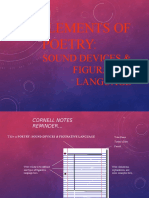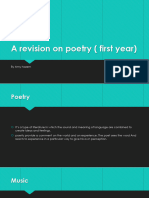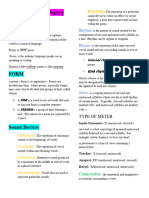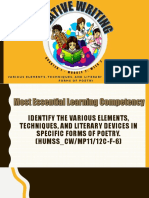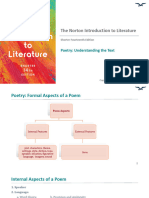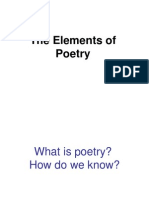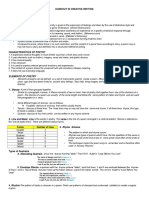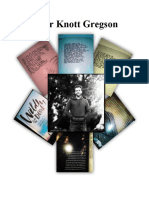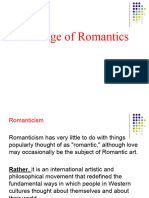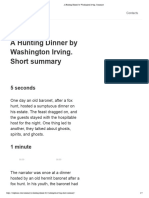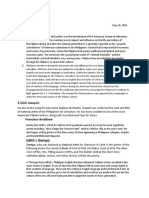0% found this document useful (0 votes)
32 views3 pagesPoetry Basics
The document serves as a study guide for understanding the basics of poetry, covering elements such as rhyme, rhythm, meter, lines, stanzas, and figurative language. It includes definitions, examples, and explanations of various poetic forms and devices, such as similes, metaphors, personification, imagery, and symbolism. Additionally, it outlines the structure of different types of stanzas and the differences between formal and free verse.
Uploaded by
ryan.haugCopyright
© © All Rights Reserved
We take content rights seriously. If you suspect this is your content, claim it here.
Available Formats
Download as PDF, TXT or read online on Scribd
0% found this document useful (0 votes)
32 views3 pagesPoetry Basics
The document serves as a study guide for understanding the basics of poetry, covering elements such as rhyme, rhythm, meter, lines, stanzas, and figurative language. It includes definitions, examples, and explanations of various poetic forms and devices, such as similes, metaphors, personification, imagery, and symbolism. Additionally, it outlines the structure of different types of stanzas and the differences between formal and free verse.
Uploaded by
ryan.haugCopyright
© © All Rights Reserved
We take content rights seriously. If you suspect this is your content, claim it here.
Available Formats
Download as PDF, TXT or read online on Scribd
/ 3


















